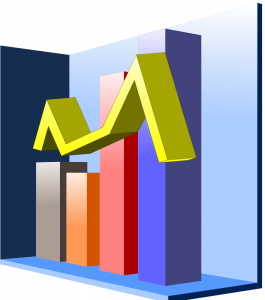H817-20b – Block 4 – Week 22 – Activity 7
“Decide which groups of people could benefit from some of the different types of data reported by Google Analytics, and make a note in the appropriate column(s).
Write a reflective piece in your learning journal or blog about how these data could be used to generate learning analytics, together with any problems that might be associated with their use in education.
Make reference to any occasions on which you have been presented with or had access to any of these data during your own learning and teaching, and share these experiences in the forum or in OU Live if they are not private or business sensitive.”
Uses of analytic reports in our context
In my investigation of Google (2020a) Analytics I have found that the following metrics would be of use to the categories of staff indicated.
|
Learner |
Educator |
Administrator |
Other |
|
Interests |
Audiences |
Location data |
Technology: IT / Systems staff |
|
User Flow |
Demographics |
Age, Gender, Marketing department. |
|
|
Cohorts |
User explorer, IT / Programmers |
Administrators could use the location data in analytics to help target course provision at one of our two campus sites which are some 80 miles apart. If most of the interest for a particular subject is concentrated geographically in one part of the region then provision can be prioritised. Similarly the demographic data could be used to plan advertising campaigns (if certain age groups are dominant in searches). It is also noted that the age, gender metric could be of benefit to the marketing department when deciding on the target of campaigns.
 Administrators may find cohort specific analysis useful to inform the maximum gap between communications from institution to potential student to maintain their interest in the college. As Google (2020b) describe it is possible to time re-engagement with visitors using records of past disengagement.
Administrators may find cohort specific analysis useful to inform the maximum gap between communications from institution to potential student to maintain their interest in the college. As Google (2020b) describe it is possible to time re-engagement with visitors using records of past disengagement.
The Interests metric could be used by lecturers to build a picture of the common interests of students studying particular courses. This information could be used to inform project descriptors for Graded Units.
Lecturers could use “user flow” analytics to discover how students are traversing their learning materials. In many of our units there are many possible paths through the resources. It may help to inform future learning design to discover the preferred route through a unit.
The Technology metric could be used to check that we are providing the best experience online to the widest possible audience. If problems arise with web pages or systems it would be useful to check if there is a common technology involved.
Analysis of the actions of a single user with the User Explorer could be used by programmers, IT staff to check that the user is complying with acceptable use policies.
Issues with analytic data
The initial problem I would associate with such metrics is that (apart from the User Explorer) they may produce generalisations which do not translate to the experiences of individual students. These are not “Predictive Analytics” as described by Greengard (2006):
“Although databases and business intelligence tools offer valuable information and insights into overall performance, they provide little more than a snapshot of a district at any given moment.”
 However, reports generated by Google Analytics could be used as part of planning and decision making.
However, reports generated by Google Analytics could be used as part of planning and decision making.
There are also serious privacy concerns to address with the use of analytics to track users actions online. This may be justified on the part of an educational institution to act in the best interest of the learner “balancing connectivity and accessibility with privacy” suggested by Baruh et al. (2017). It may not be possible to offer the learner complete anonymity due to the requirements of summative assessment and engagement tracking.
Personal Experience
During the early stages of the current pandemic, after lockdown was imposed in Scotland I was asked to identify courses where a majority of students had not accessed any of our digital services since the lockdown. This was an attempt to identify those students who may be at risk due to connectivity, hardware, digital capabilities or other issues.
I used analytical data from the Office 365 administration centre along with Moodle logs to create a list of courses where ‘attendance’ had dropped since the lockdown. I was able to pass this information to the relevant staff members who would do follow up work with the information.
References
Baruh, L., Secinti, E. and Cemalcilar, Z., 2017. Online privacy concerns and privacy management: A meta-analytical review. Journal of Communication, 67(1), pp.26-53.
Google (2020a) Analytics, Available at: https://analytics.google.com (Accessed: 5th July 2020).
Google (2020b) The Cohort Analysis Report, Available at: https://support.google.com/analytics/answer/6074676 (Accessed: 5th July 2020).
Greengard, S. (2006) How Predictive Analytics Will Improve Learning, Available at: https://edtechmagazine.com/k12/article/2006/10/how-predictive-analytics-will-improve-learning (Accessed: 5th July 2020).